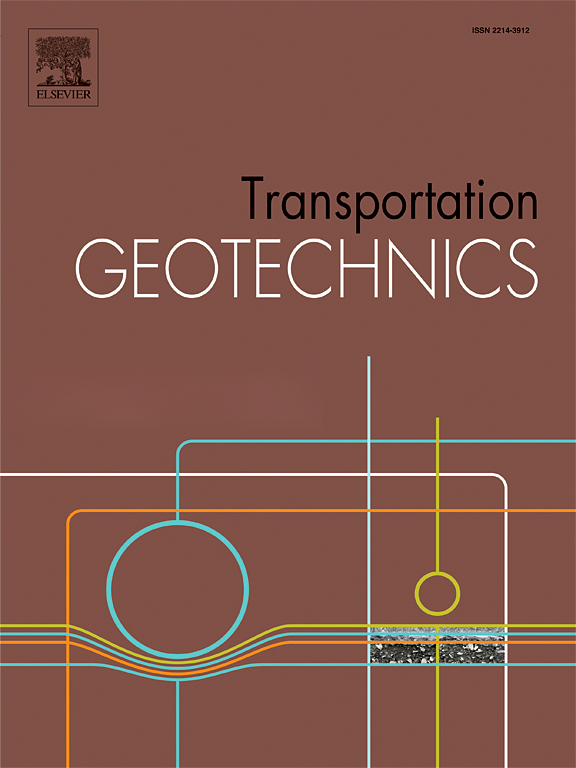MPM-FEM based numerical analysis on responses of stratum and twin tunnels to water-soil gushing
IF 4.9
2区 工程技术
Q1 ENGINEERING, CIVIL
引用次数: 0
Abstract
Water-soil gushing presents significant challenges in shield tunnel engineering, notably large soil deformations and complex interactions between the tunnel structure and surrounding strata. Hence, this study proposed a comprehensive numerical analysis procedure using MPM and FEM to examine the whole-process responses of strata and twin tunnels to water-soil gushing. To tackle the difficulties in simulating large soil deformations, a two-phase MPM approach is first introduced and validated through a detailed case study, and then soil and water pressures obtained from the MPM model are transferred to a FEM model for tunnel structures by utilizing a data interface. The findings of a case study reveal that the gushing significantly affect the surrounding soils, particularly in terms of variations in pore pressure and soil stress within the flow zone, which could lead to significant changes in shear forces and bending moments of tunnel lining. A parametric study investigated the influence of gushing location on the tunnel. The results indicate that lower gushing locations in the tunnel lead to larger variations in the effective soil stress distribution and flow zone patterns, causing a more dramatic joint opening and dislocation. This study provides key insights into the evolutionary responses of the strata and tunnels due to the water-soil gushing, offering valuable guidance for designing and maintaining shield tunnels in water-rich sandy layers.
求助全文
约1分钟内获得全文
求助全文
来源期刊

Transportation Geotechnics
Social Sciences-Transportation
CiteScore
8.10
自引率
11.30%
发文量
194
审稿时长
51 days
期刊介绍:
Transportation Geotechnics is a journal dedicated to publishing high-quality, theoretical, and applied papers that cover all facets of geotechnics for transportation infrastructure such as roads, highways, railways, underground railways, airfields, and waterways. The journal places a special emphasis on case studies that present original work relevant to the sustainable construction of transportation infrastructure. The scope of topics it addresses includes the geotechnical properties of geomaterials for sustainable and rational design and construction, the behavior of compacted and stabilized geomaterials, the use of geosynthetics and reinforcement in constructed layers and interlayers, ground improvement and slope stability for transportation infrastructures, compaction technology and management, maintenance technology, the impact of climate, embankments for highways and high-speed trains, transition zones, dredging, underwater geotechnics for infrastructure purposes, and the modeling of multi-layered structures and supporting ground under dynamic and repeated loads.
 求助内容:
求助内容: 应助结果提醒方式:
应助结果提醒方式:


